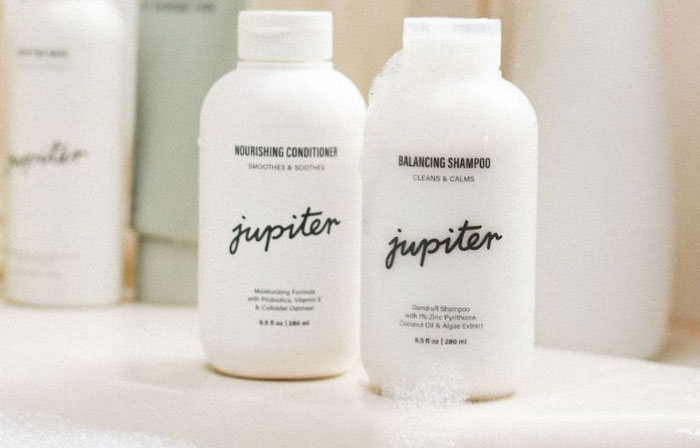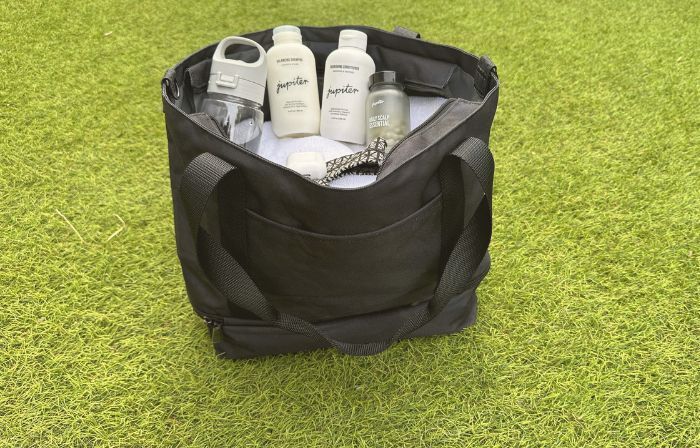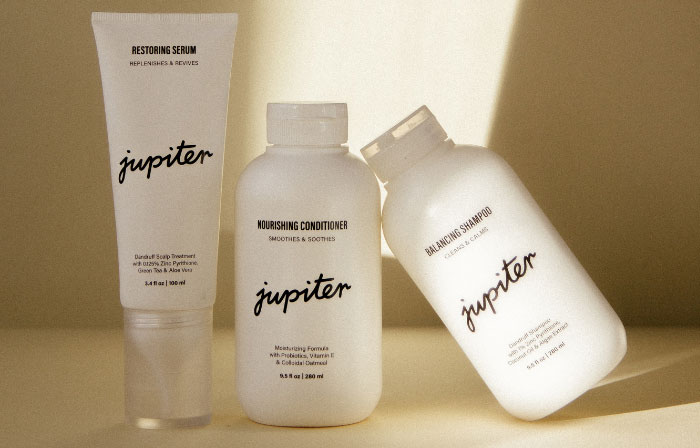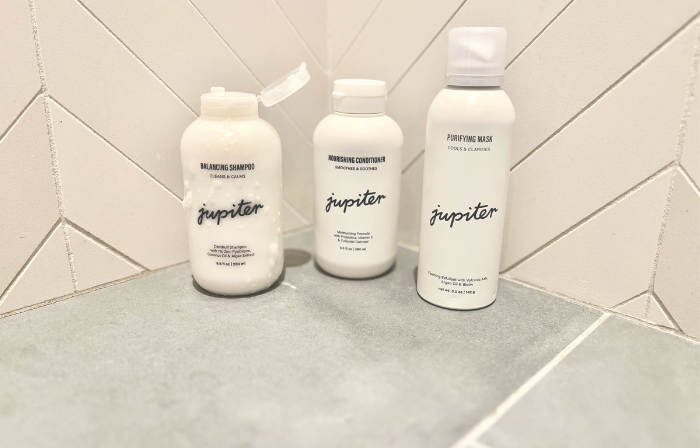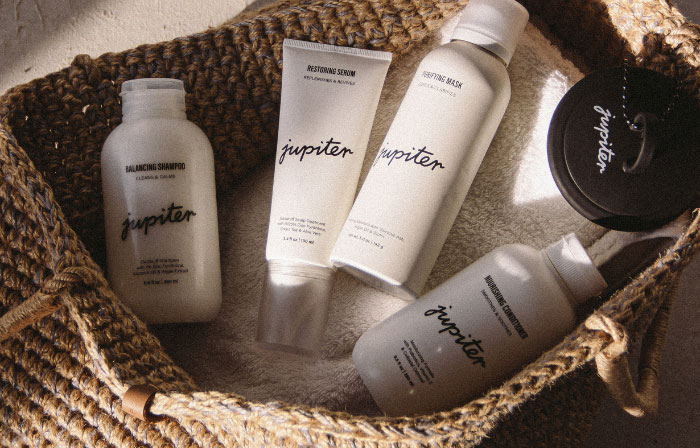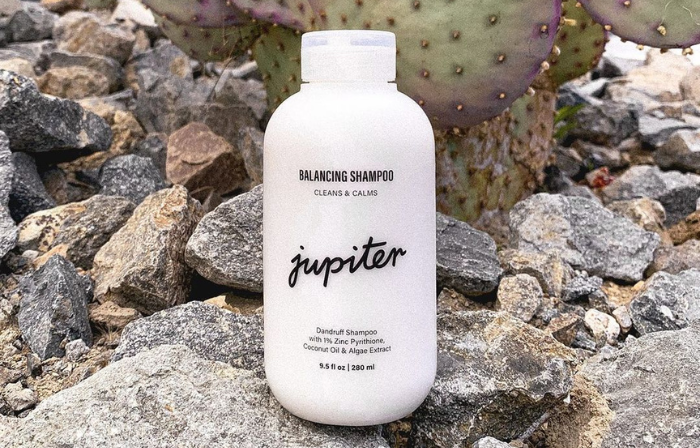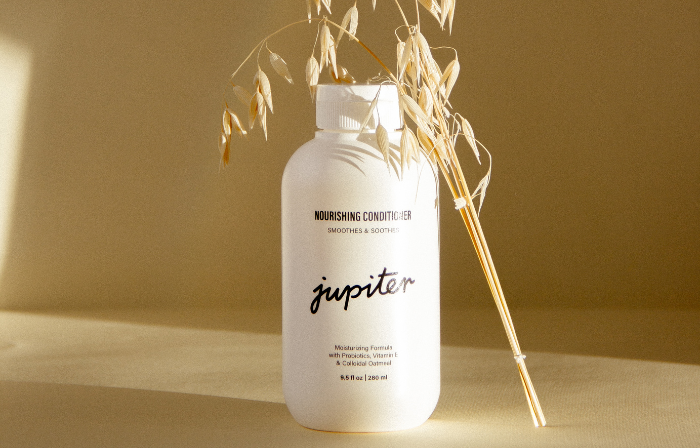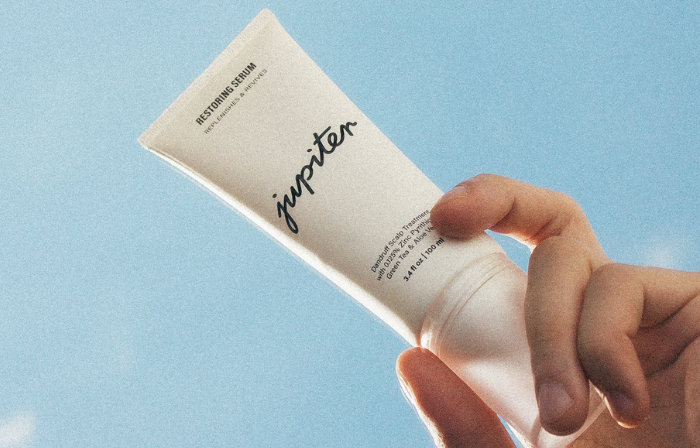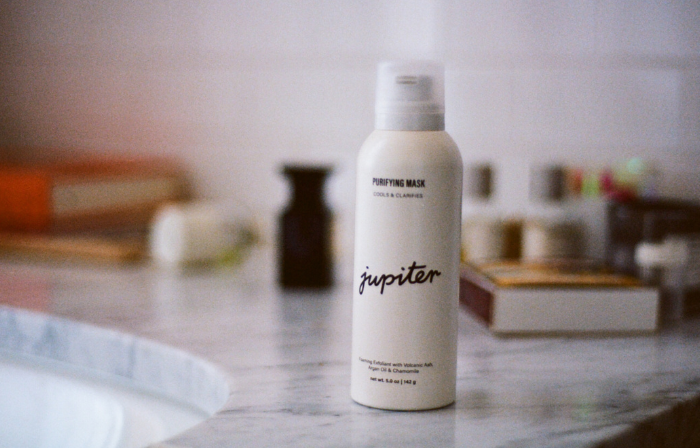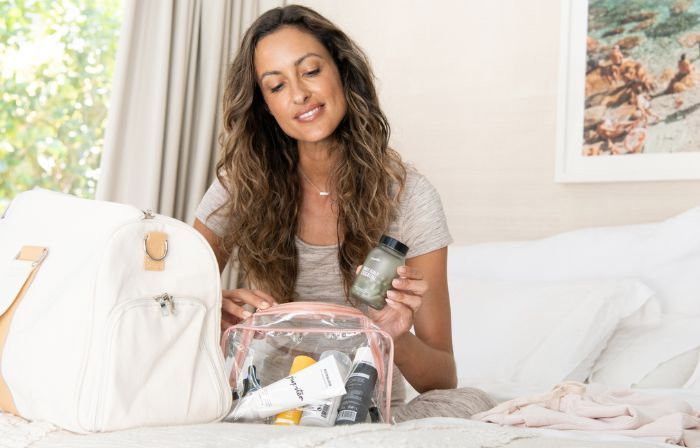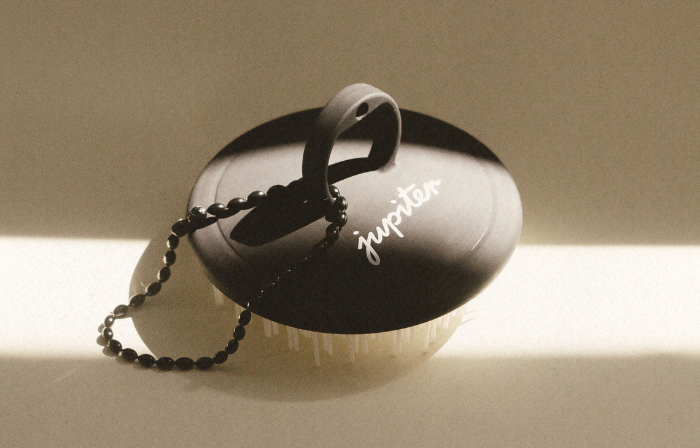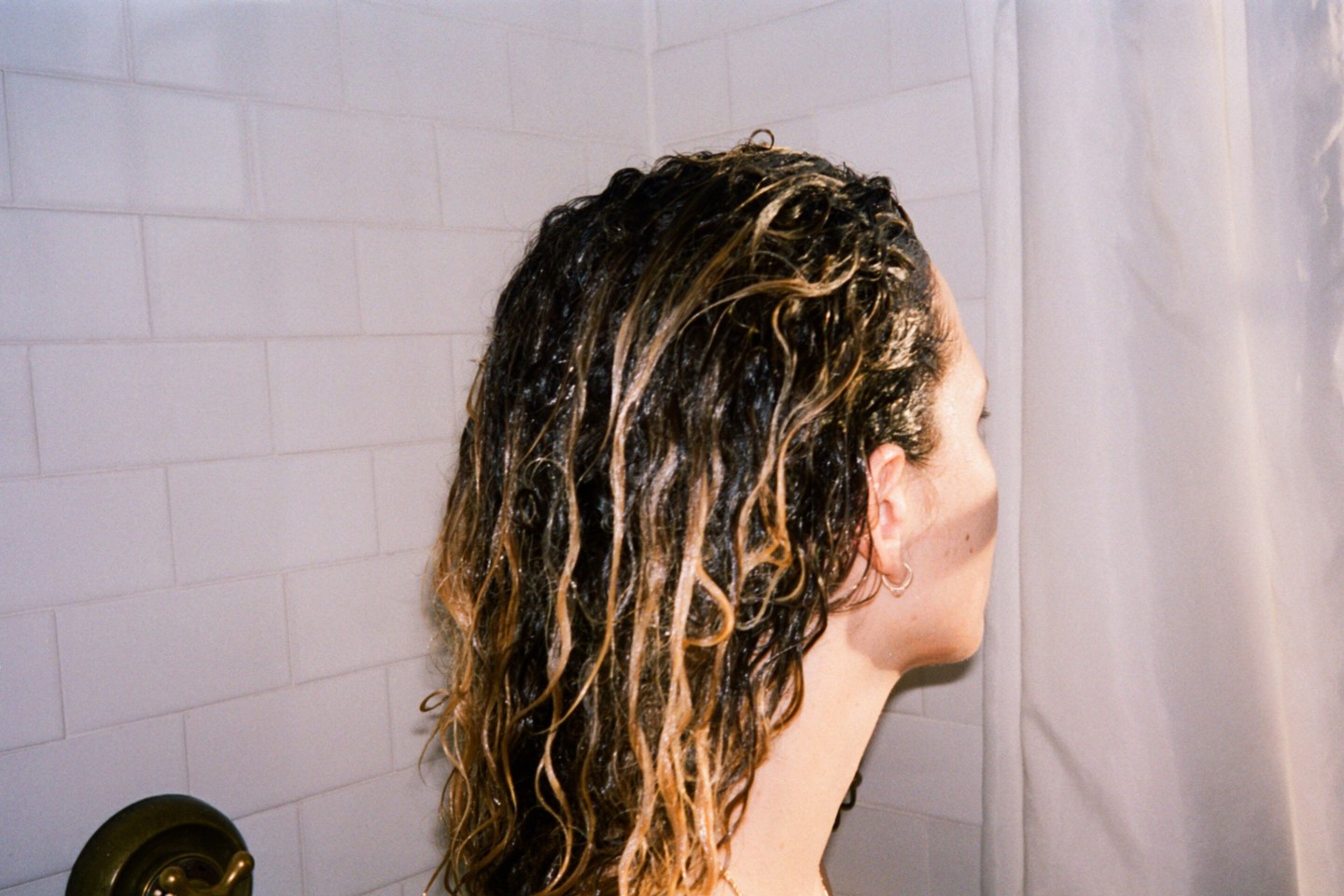🫶🏻 OUR 5% PLEDGE TO HER
#STRONGHERTHANYESTERDAY - WE DONATE 5% TO WOMEN-DRIVEN CHARITIES. LEARN MORE.
Shower thoughts - where would we be without them? It’s a question worth pondering next time you’re scrubbing and lathering. And here’s another one, while we’re at it: what’s the deal with shampoo? Where does it come from and how does it work?
It turns out shampoo isn’t just a modern luxury. People have been setting time aside to cleanse their hair and care for their damaged or dry hair with ingenious treatments for thousands of years, using all kinds of surprising natural materials to get the full hydrating and moisturizing effects we see today in modern shampoos and hair care. Let’s take this question out of the shower and see what history says about the origin and science of shampoo.
Shampoo's Global Roots
In India, routine hair care products and cleansers have been around for millennia. People of the Indian subcontinent would historically boil saponin-rich soapberries with a mixture of herbs and fruits, then strain it for an effective, lathery shampoo. This product would clean hair and keep it manageable. As travel between India and Europe became more common, the practice of shampooing spread throughout the western world. In fact, the word shampoo is derived from the Hindi word chāmpo, which means “to kneed” or “to soothe.”
Of course, other cultures invented different methods for making hair care products to lather on your locks. Indigenous people from the Andes Mountains region would save the foamy water they used to rinse quinoa, which was full of saponins, to clean their hair. And people of ancient Greece used vinegar rinses to clean and lighten their hair, followed by olive oil as a conditioner.
Ancient Egyptians preferred to skip the hair care routine altogether. Instead, they would shave their heads and don wigs to avoid lice. But these wigs were washed meticulously with citrus juice, then coated with almond oil to keep them soft and shiny.
These early examples of shampoo were not much different than soaps. Modern shampoos, many of which use synthetic surfactants, were first introduced in the 1930s. Today, nearly a century later, there is a wide variety of specialty shampoos to choose from. Whether you’re looking for baby shampoo, treatments for damaged hair, shampoo for color-treated hair, or even pet shampoo, the modern beauty industry has you covered.
Shampoos that over-dry your scalp, lead to hair product build-up, or clog your pores can ultimately throw off the natural balance of oils in your hair and on your scalp.
The Science of Clean Hair
Skip a few showers on a camping trip, and you’ll notice the difference pretty quickly. The greasy feeling in your hair is excess sebum - an oil your body naturally produces to help protect your skin and retain moisture (think of it as natural skincare). This excess sebum can cause your scalp to get irritated, there may be an unpleasant smell, and you might have to deal with ingrown hairs. This is due to oil in your hair capturing dirt, pollen, and odors it comes into contact with.
Once these foreign substances are trapped in, no amount of water will rinse them away. That’s because sebum is hydrophobic. Like most oils, it doesn’t mix with water. (Think of an oil-and-vinegar dressing.) To cut through the sebum and truly clean your hair, you need a surfactant. That’s the magic behind modern shampoo and detergents. Surfactants are simply chemicals that help water bind to your body oils and wash them away. Of course, this leaves your hair and scalp exposed, hence the need for conditioners to keep you protected.
Most modern shampoos also contain a range of additives. Some of these are purely for aesthetic purposes, like pleasing fragrances, while some affect the look and feel of the product. Others have properties that nourish and strengthen your hair, repair damage to the hair shaft, moisturize your scalp, keep your hair soft and shiny, etc. The most well known of these ingredients are keratin, silicone, and tea tree oil which is prominent in most clarifying shampoos. Bringing these ingredients together into a single product has become a true art and science in the 21st century.
Finding the Best Dandruff Shampoo
Of course, there is a wide diversity of hair types - and not everyone’s hair responds well to the same treatment. Whether you have fine hair or hair that gives off a bit of frizz in the morning, your hair is going to respond to shampoo & conditioner in vastly different ways. Products that are free from harsh surfactants (ie sulfate-free) and foaming agents have gained popularity as more and more people are becoming mindful of the ingredients in their hair products.
Many commercial shampoos use sodium lauryl sulfate as a cheap and effective detergent and foaming agent. But this and other harsh surfactants can leave hair frizzy and dry. People with curly hair generally have more pores that can trap these agents, making it more difficult to rinse out the harsh chemicals and get the nourishing and volumizing affects that gentler moisturizing shampoos offer.
And if you have dandruff? Unfortunately, conventional shampoos can actually worsen the problem. Dandruff is simply flaking that results from irritation of the scalp. Shampoos that over-dry your scalp, lead to hair product build-up, or clog your pores can ultimately throw off the natural balance of oils in your hair and on your scalp. This only escalates the irritation, feeding unhealthy scalp fungus and causing more flaking.
The best shampoo for your flakes is one that is free from sulfates, parabens, and phthalates and uses Zinc Pyrithione for its proven anti-dandruff properties. Not only can it prevent Malassezia yeast from reproducing on your scalp, but it can also boost the levels of zinc present in your scalp, which can stave off seborrheic dermatitis and dry scalp.
Finding a great anti-dandruff shampoo that combines the power of a proven active ingredient with natural ingredients like probiotics, colloidal oatmeal, and essential oils is the first step in having a flake-free scalp and healthier hair. It’s also important to keep in mind your styling and hair care routine as a whole. Breakage and dryness can result from using flat irons and other heat tools, as well as treatments done at home or at the hairdresser. To make sure your hair feels fresh, build a routine that hydrates and nourishes your scalp.
Jupiter: Shampoo Reimagined
If you’re looking to check out a new dandruff shampoo that can help prevent an itchy scalp, irritation, and keep flakes at bay, you’re probably wondering why the industry is stuck in the past. From product packaging to that medicated smell, dandruff shampoos have stubbornly refused to evolve for generations.
Jupiter is different. We’re the first elevated dandruff and scalp care brand creating products that actually work - and that you’ll seriously love to use. Formulated by expert chemists and dermatologist-tested, our dandruff care products work at the root to stop your flakes for good and bring back the healthy hydration you need. And our scalp and hair care products use beautiful, natural luxurious like coconut oil and lavender to nourish and moisturize your scalp and hair.
But Jupiter isn’t just about banishing your flakes and soothing your scalp. We create a luxurious shower experience - so you can enjoy your ‘me-time’ and get back to things that matter.
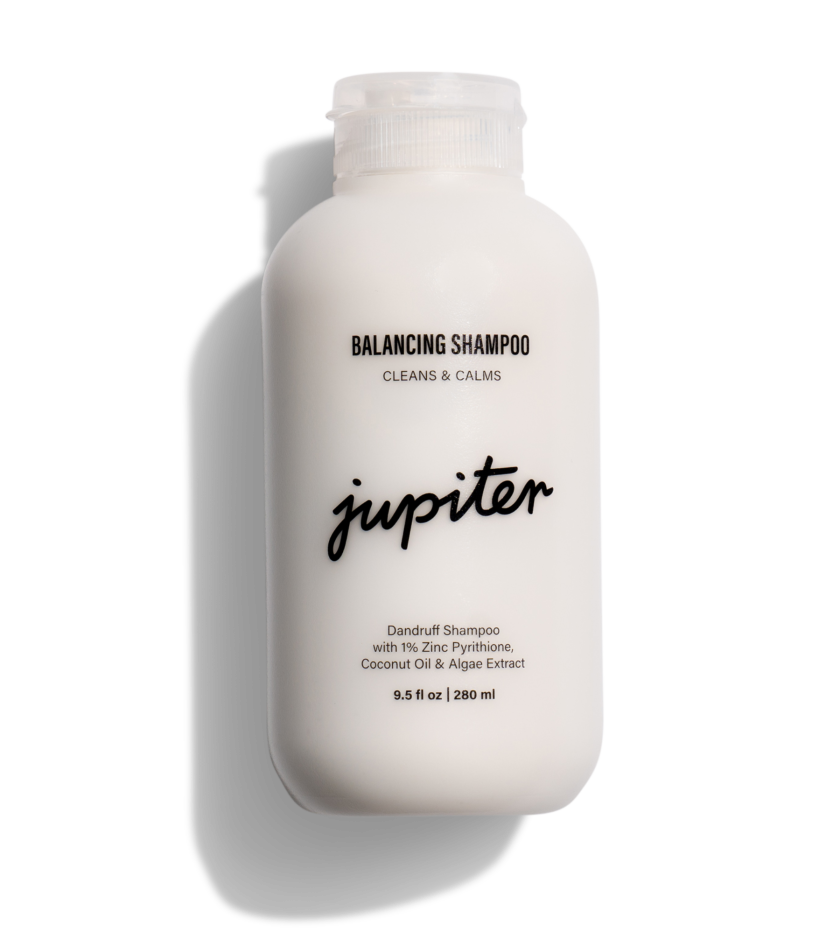
Meet our head honcho. This soothing multi-tasker gets to the root of flaking and irritation, thanks to our star active ingredient, Zinc Pyrithione. Backed by a lush aroma of mint, vanilla, rosemary, sage, tangerine, and lavender, it’s bound to elevate your mood, and your shower.
